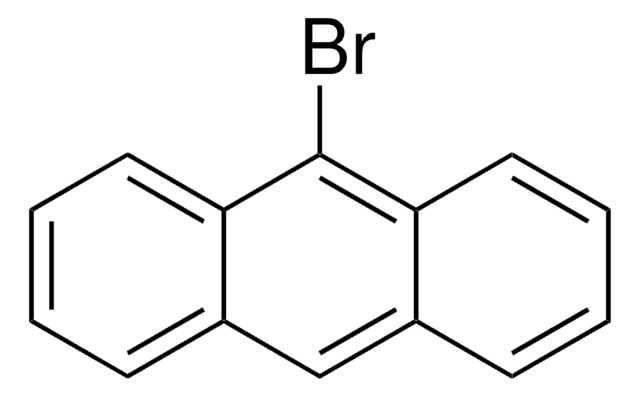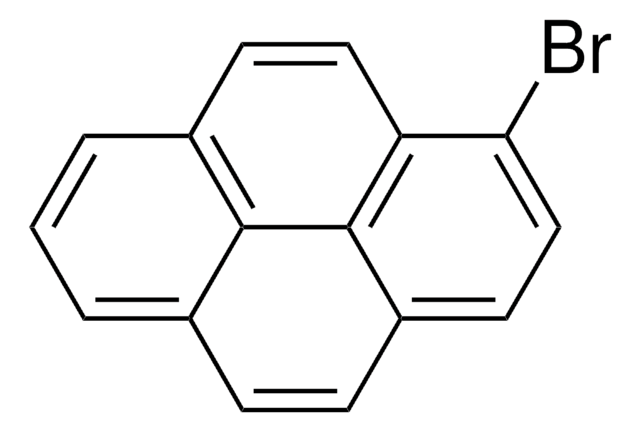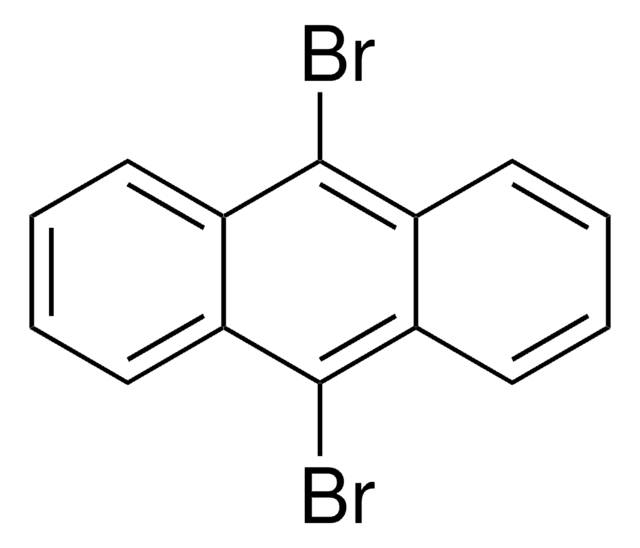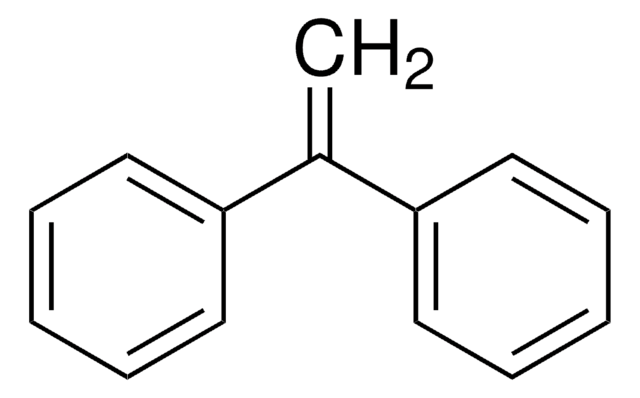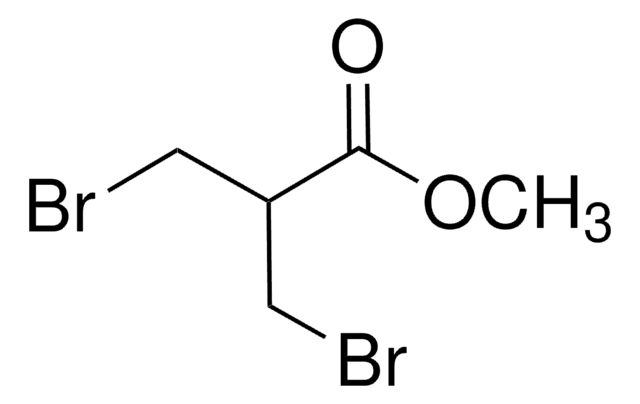All Photos(1)
About This Item
Empirical Formula (Hill Notation):
C14H9Cl
CAS Number:
Molecular Weight:
212.67
EC Number:
MDL number:
UNSPSC Code:
12352100
PubChem Substance ID:
NACRES:
NA.22
Recommended Products
Assay
95%
form
solid
mp
77-80 °C (lit.)
density
1.171 g/mL at 25 °C (lit.)
functional group
chloro
SMILES string
Clc1cccc2cc3ccccc3cc12
InChI
1S/C14H9Cl/c15-14-7-3-6-12-8-10-4-1-2-5-11(10)9-13(12)14/h1-9H
InChI key
SRIHSAFSOOUEGL-UHFFFAOYSA-N
General description
1-Chloroanthracene forms photodimer trans-bi(1-chloro-9,10-dihydro-9,10-anthracenediyl) via the solid-state [4+4]-photodimerization.
Application
1-Chloroanthracene was used to investigate the effect of polycyclic aromatic hydrocarbons on gap junctional intercellular communication and activation of intracellular receptor kinase in F344 rat liver epithelial cells.
Storage Class Code
11 - Combustible Solids
WGK
WGK 3
Flash Point(F)
Not applicable
Flash Point(C)
Not applicable
Personal Protective Equipment
dust mask type N95 (US), Eyeshields, Gloves
Choose from one of the most recent versions:
Already Own This Product?
Find documentation for the products that you have recently purchased in the Document Library.
Ilona Turowska-Tyrk et al.
Acta crystallographica. Section C, Crystal structure communications, 60(Pt 2), o146-o148 (2004-02-10)
Crystals of the 1-chloroanthracene photodimer, viz. trans-bi(1-chloro-9,10-dihydro-9,10-anthracenediyl), C(28)H(18)Cl(2), were obtained from the solid-state [4+4]-photodimerization of the monomer, C(14)H(9)Cl, followed by recrystallization. The symmetry of the product molecules is defined by the orientation of the reactant molecules in the crystal. The
A M Rummel et al.
Toxicological sciences : an official journal of the Society of Toxicology, 49(2), 232-240 (1999-07-23)
Many polycyclic aromatic hydrocarbons (PAHs) are known carcinogens. A considerable amount of research has been devoted to predicting the genotoxic, tumor-initiating potential of PAHs based on chemical structure. However, information on the correlation of structure with the non-genetoxic, epigenetic events
Miki Sato et al.
The Analyst, 142(23), 4560-4569 (2017-11-09)
The detection limits and photoionization thresholds of polycyclic aromatic hydrocarbons and their chlorides and nitrides on the water surface are examined using laser two-photon ionization and single-photon ionization, respectively. The laser two-photon ionization methods are highly surface-selective, with a high
Diógenes Herreno-Sáenz et al.
International journal of environmental research and public health, 3(2), 191-195 (2006-07-11)
Since the finding in the 1930s, a large number of polycyclic aromatic hydrocarbons (PAHs) of different structures have been tested for potential tumorigenicity. Structure-activity relationships of halo-PAHs have been investigated to determine the regions of a PAH that may be
Rong Jin et al.
Journal of chromatography. A, 1509, 114-122 (2017-06-18)
Isotopic dilution gas chromatography combined with high resolution mass spectrometry (GC/HRMS) has overwhelming advantages with respect to the accuracy of congener-specific ultratrace analysis of complex persistent organic pollutants (POPs) in environmental matrices. However, an isotopic dilution GC/HRMS method for analysis
Our team of scientists has experience in all areas of research including Life Science, Material Science, Chemical Synthesis, Chromatography, Analytical and many others.
Contact Technical Service